
Presented by Marc Parham, Business Development Consultant,
Presented by Marc Parham, Business Development Consultant, mparham@atlul.org The 6 basic steps to business plan development Answering the basic questions Tools for writing the plan How to research for the plan ◦ Finding sample business plans ◦ Finding demographic Information ◦ Finding competition Information The business plan outline Developing business plan content How to develop basic financial budgets and projections Summary 1. 2. 3. 4. 5. 6. Answer the basic questions (Who, What, When, Where, Why) Research the type of business Research the demographics of the service area Research for other similar businesses and business plans Develop the business plan outline Write the business plan WHO ◦ Who are you and the name of your business WHAT ◦ What type of business and what are you selling? WHEN ◦ When are you selling it? WHERE ◦ Where are you going to sell it? WHY ◦And Why are you in business? Business Plan Software ◦ www.bplans.com Business Plan Templates ◦ Do a search online for business plan templates SBA Online Business Plan Template ◦ The SBA has a great online tool that can be used to develop the initial plan. ◦ http://sba.gov/smallbusinessplanner/index.html Business Plan Assessment Tools ◦ The Capacity Builder Network Site www.thecapacitybuildernetwork.com Demographic Research ◦ Use Google/Bing to search the zip code area Competition Research ◦ Use Google/Bing to search the zip code by businesses of the same type ◦ Go to the websites of similar businesses Business Plan Research ◦ Go to www.bplans.com to find a similar plan ◦ Review it to get ideas on what to put into yours Executive Summary Business Description and Vision Definition of the Market Description of the Products and Services Organization and Management Marketing and Sales Strategy Financial Management Start writing your plan one heading at a time. Use your own words. It is you that is selling the idea. You will have someone read it later to see how well it reads. Research, Research! Yes I said it! You will have to do some research to fully develop your plan. Use the internet to do this research. This section should: ◦ Be written last. ◦ Provide an enthusiastic snapshot of your company, explaining who you are, what you do and why. ◦ Be less than 2 pages in length. After reviewing this section the reader should: ◦ Want to learn more about your business. ◦ Have a basic understanding about your company. This section should include: ◦ Mission statement (business purpose). ◦ Company vision (statement about company growth). ◦ Business goals and objectives. ◦ Brief history of the business. ◦ List of key company principals. After reviewing this section the reader should know: ◦ Who the business is and what it stands for. ◦ Your perception of the company’s growth & potential. ◦ Specific goals and objectives of the business. ◦ Background information about the company. What will be the objective of your business? For example if you are starting a restaurant, what will be the main reason people will come to you. The best wings, great food at a good price, a place where I can bring my family. This section should: ◦ Describe your business industry and outlook. ◦ Define the critical needs of your perceived or existing market. ◦ Identify your target market. ◦ Provide a general profile of your targeted clients. ◦ Describe what share of the market you currently have and/or anticipate. After reviewing this section the reader should know: ◦ Basic information about the industry you operate in and the customer needs you are fulfilling. ◦ The scope and share of your business market, as well as who your target customers are. This section should: ◦ Specifically describe all of your products and services. ◦ Explain how your products and services are competitive. ◦ If applicable, reference a picture or brochure of your products, which would be included in the plan’s appendix. After reviewing this section the reader should know: Why you are in business. ◦ What your products and services are and how much they sell for. ◦ How and why your products & services are competitive. This section should: ◦ Provide a description of how your company is organized as well as an organization chart, if available. ◦ Describe the legal structure of your business (proprietorship, partnership, corporation, etc.). ◦ Identify necessary or special licenses and/or permits your business operates with. ◦ Provide a brief bio description of key managers within the company. After reviewing this section the reader should know: ◦ The legal form of ownership for your business. ◦ Who the leaders are in your business as well as their roles. ◦ The general flow of operations within the firm. What type of legal business structure do you plan on using? A Sole-proprietorship, an LLC or a corporation. Is it going to be a retail business where people come to you to buy your product or service (i.e. store, restaurant, cleaners, etc) or will you take your product or service to the customer? (Lawn care, handyman, house painter, etc.). Why can you be successful in this particular business? What is your or your key person’s background and experience in this area of business? ◦ Using the home painting business as an example, maybe you have been working painting homes for other companies for 15 years and you learned from your grandfather who has been doing it all of his life. Who will do the bookkeeping, ordering of supplies, and invoicing. This might be you, but you will need to show that you are aware that this is important and someone will be doing it. This section should: ◦ Identify and describe your market – who your customers are and what the demand is for your products & services. ◦ Describe your channels of distribution. ◦ Explain your sales strategy, specific to pricing, promotion, products and place (4Ps). After reviewing this section the reader should know: ◦ Who your market is and how you will reach it. ◦ How your company will apply pricing, promotion, product diversification and channel distribution to sell your products and services competitively. How will you market your business? The internet, local newspapers, flyers, coupons, etc. How will you get the message out? ◦ You might attend neighborhood meetings to announce your company. ◦ If you are a restaurant you might even supply the food for a neighborhood meeting. You will need to do research for similar companies in your area that area. This will also help you create differences in how you will sell your product. A simple internet search will give you loads of information. For example, you want to start a take -out wings restaurant. Use Google or another search engine and search for “take-out wings in 30303(your zip code)”. Using Google again just enter the zip code for the area you want to service and you will find a report in the return hits that contains the demographic information for this area. There will be different reports. Find the one that has the information you need to support your idea. ◦ Using the Take-out Wings restaurant, you might find that there is a college, sports stadium, or park in the area. You might also find that there are a lot of young people that live in the area and we know who eats a lot of wings…. This section should include: ◦ For a New Business Estimate of start-up costs. Projected balance sheet (1 year forward). Projected income statement (1 year forward). Projected cash flow statement (12 months forward). ◦ For an Existing Business Balance sheets (last 3 years). Income statements (last 3 years). Cash flow statement (12 months). ◦ If Applying for a Loan (in addition to the above) Current personal financial statement on each principal. Federal tax return for prior year. After reviewing this section the reader should: ◦ Have a good understanding regarding the financial capacity and/or projections for your company. What will it cost to start and run your business for at least the next two years. There will be fixed cost or cost that will pretty much stay the same (i.e. rent, utilities, equipment, insurance, etc). There also will be variable cost that will change as your business changes. For example if you are starting a home painting business you might create a cost sheet for how much it will cost to paint a average 3 bedroom house. (I.e. paint, labor, supplies). Startup Budget June 8, 2010 Cash Needed to Start Enter the est. cost Use other plans Research Research Research Monthly Costs Salary of owner-manager All other salaries and wages Rent Advertising Delivery expense Supplies Telephone Other utilities Insurance Taxes, including social security Interest Maintenance Legal and other professional fees Miscellaneous Subtotal $6,000 7,000 1,000 2,000 400 500 500 500 600 1,000 500 300 3,000 500 $23,800 One-Time Costs Fixtures and Equipment Decorating and remodeling Installation charges Starting inventory Deposits with public utilities Legal and other professional fees Licenses and permits Advertising and promotion for opening Cash Other Subtotal $10,000 1,000 500 5,000 1,000 500 500 500 750 200 $19,950 Totals $43,750 Use this worksheet to project business cash flow. PCA Small Business Cash Flow Projection Starting date Cash balance alert minimum May-10 0 Beginning May-10 Cash on hand (beginning of month) CASH RECEIPTS Contract Service Call out fees Service Calls Misc Parts Product/Service 5 Misc Revenue TOTAL CASH RECEIPTS Total cash available CASH PAID OUT Advertising Commissions and fees Contract labor Employee benefit programs Insurance (other than health) Interest expense Materials and supplies (in COGS) Meals and entertainment Mortgage interest 0 0 Jun-10 0 Jul-10 0 Aug-10 0 Sep-10 0 Oct-10 0 Nov-10 0 Dec-10 0 Jan-11 0 Feb-11 0 Mar-11 0 Apr-11 0 787 4,334 7,881 11,428 14,975 18,522 22,069 25,616 29,163 32,710 36,257 2,400 2,400 800 2,560 2,400 800 2,560 2,400 800 2,560 2,400 800 2,560 2,400 800 2,560 2,400 800 2,560 2,400 800 2,560 2,400 800 2,560 2,400 800 2,560 2,400 800 2,560 2,400 800 2,560 2,400 2,400 5,760 6,547 5,760 10,094 5,760 13,641 5,760 17,188 5,760 20,735 5,760 24,282 5,760 27,829 5,760 31,376 5,760 34,923 5,760 38,470 5,760 42,017 100 100 100 100 100 100 100 100 100 100 100 100 250 250 250 250 250 250 250 250 250 250 250 250 Total 28,800 8,800 28,160 0 0 0 65,760 1,200 0 0 0 3,000 0 0 0 0 The plan is a living document. It will change as you and your business changes Start writing your plan one heading at a time. Use your own words. It is you that is selling the idea. Research, Research! Use all available resources Have someone read it later to see how well it reads. Use spell check and other tools to help correct the basic errors in your plan. Remember they will not catch everything. You must read it yourself and have other read it as well. Don’t get all sensitive if they come back with changes and corrections. You would rather have them find them then your potential investor or bank. Google / Bing ◦ www.google.com ◦ www.bing.com Bplans.com – Sample Business Plans ◦ http://www.bplans.com/ Small Business Administration ◦ www.sba.gov http://web.sba.gov/busplantemplate/BizPlanStart.cfm The Capacity Builder Network ◦ www.thecapacitybuildernetwork.com ◦ Members Download Area Internal Revenue Service ◦ www.irs.gov http://www.irs.gov/businesses/index.html?navmenu=menu1 MARKET PLAN IS JUST AS IMPORTANT AS YOUR BUSINESS PLAN MARKET PLAYS A KEY FACTOR IN DOING BUSINESS SETS A CLEAR OBJECTIVE MARKETING IS IMPORTANT IN BUILDING CUSTOMERS PRODUCT OR SERVICE AWARENESS SOCIAL MARKETING (facebook, twitter, myspace, blogsite) VIRAL VIDEOS FLYER DISTRIBUTION BRAND MARKETING FAQ's MEDIA PRESS RELEASE BROCHURES EMAILS
© Copyright 2025

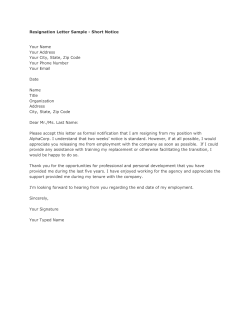
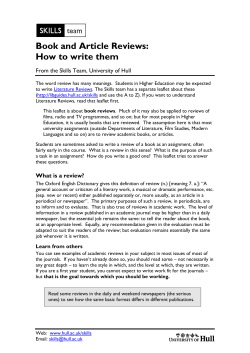


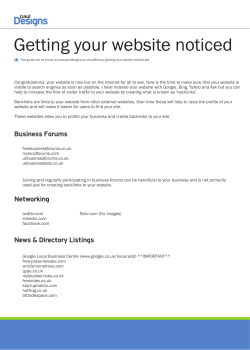




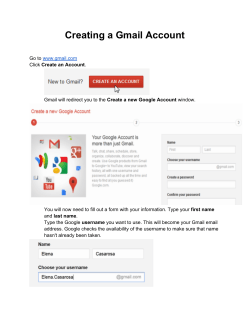


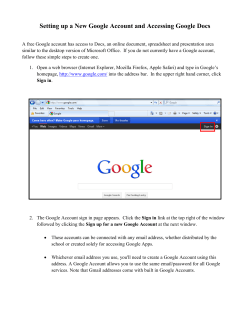
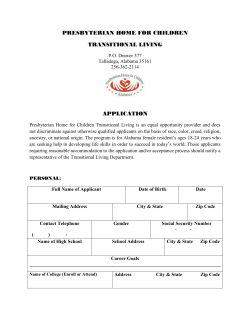
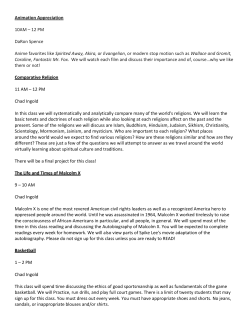

![[NAME OF COMPANY] BUSINESS PLAN EXECUTIVE SUMMARY](http://cdn1.abcdocz.com/store/data/000170276_1-284f4fa6e5a0875864aa4c4eda5619d7-250x500.png)



